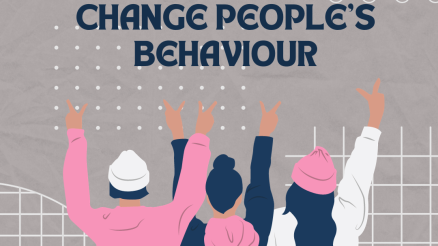Change management is an integral part of project management, ensuring that changes are implemented in a controlled and organized manner to minimize disruption and maximize success.
While there are many different change management models to choose from, the waterfall model remains a popular choice for its predictability and accountability.
In this blog post, we will explore the key concepts of waterfall change management, including its stages and implementation process.
We will also discuss the benefits and limitations of using a waterfall model for change management, and provide alternatives for those situations where the waterfall model may not be the best fit.
By the end of this post, readers will have a thorough understanding of waterfall change management and be better equipped to evaluate its effectiveness in their own project management processes.
What is waterfall change management?
Waterfall change management is a sequential and linear approach to managing changes in a project or system. This model follows a specific set of stages that must be completed in order, starting with planning and ending with deployment. Each stage must be fully completed before moving on to the next stage, with little to no room for changes or revisions. This approach emphasizes predictability, control, and documentation, with the goal of reducing the risk of errors or failure in the change process. Waterfall change management is often used in projects where the scope, requirements, and outcomes are well-defined and unlikely to change significantly during the course of the project.
07 Stages of Waterfall change management
The waterfall model of change management typically includes the following stages:
1. Requirements gathering
In this stage, the requirements for the change are gathered and analyzed in detail. This includes understanding the scope of the change, identifying stakeholders and their requirements, and defining the specific goals and objectives of the change.
2. Planning
Once the requirements are defined, the planning stage begins. This includes identifying the resources needed, creating a timeline and budget, and developing a detailed plan for executing the change.
3. Design
During this stage, the team develops a detailed design for the change, which includes technical specifications, architecture, and any necessary diagrams or models.
4. Development
In this stage, the change is actually built or developed based on the design specifications. This could include coding, testing, and quality assurance.
5. Testing
Once the change is developed, it is tested thoroughly to ensure that it meets all requirements and works as expected. This stage includes various types of testing, such as unit testing, integration testing, and system testing.
6. Deployment
After the change is tested and validated, it is deployed or implemented in the production environment. This stage may involve training end-users, creating documentation, and ensuring that the change is properly integrated with existing systems.
7. Maintenance
Once the change is deployed, ongoing maintenance is required to ensure that it continues to function as expected. This may involve bug fixes, updates, or other changes to the system over time
Advantages of waterfall change management
Waterfall change management has several advantages, including:
Predictability
The sequential and linear nature of the waterfall model makes it easier to predict timelines, budgets, and resources needed for the change management process. This helps teams to plan and manage their work more effectively.
Accountability
Each stage of the waterfall model is fully completed before moving on to the next stage, ensuring that team members take responsibility for their work and are accountable for meeting their objectives.
Control
The waterfall model emphasizes documentation and planning, giving teams a high degree of control over the change management process. This allows teams to identify and mitigate risks and ensure that quality control measures are in place.
Better scope definition
The waterfall model is particularly useful for projects where the scope, requirements, and outcomes are well-defined and unlikely to change significantly during the course of the project. This makes it easier for teams to plan and execute the change process effectively.
Improved communication
The waterfall model requires a high level of documentation and communication between team members, ensuring that everyone is on the same page and that information is shared effectively.
Disadvantages of waterfall change management
While the waterfall model of change management has several advantages, it also has some significant disadvantages. These include:
Inflexibility
The sequential nature of the waterfall model makes it difficult to make changes or revisions once a stage has been completed. This can be problematic if requirements or circumstances change during the course of the project.
Limited feedback
Because each stage of the waterfall model must be completed before moving on to the next stage, there is limited opportunity for feedback or input from stakeholders. This can result in a final product that does not fully meet the needs of all stakeholders.
High risk
The waterfall model is particularly risky for projects where requirements are not well-defined or where there is a high degree of uncertainty. This can lead to significant problems later in the project lifecycle.
Time-consuming
The documentation and planning required by the waterfall model can be time-consuming and can slow down the change management process. This can be problematic in situations where a rapid response is needed.
Difficulty responding to change
The sequential and linear nature of the waterfall model makes it difficult to respond to changes or unexpected events that occur during the project. This can make it challenging for teams to adapt to changing circumstances.
Alternative Approaches to Waterfall Change Management
There are several alternative approaches to change management that may be more appropriate for certain projects or situations. Some of these alternatives include:
Agile change management
Agile change management is a flexible and iterative approach that emphasizes collaboration, communication, and adaptability. This approach involves breaking the change process into small, manageable tasks that can be completed quickly and efficiently.
Lean change management
Lean change management is a data-driven approach that focuses on continuous improvement and waste reduction. This approach involves testing and validating assumptions and making small changes that can be implemented quickly.
Six Sigma change management
Six Sigma change management is a data-driven approach that uses statistical methods to identify and eliminate defects in the change process. This approach emphasizes measuring and analyzing data to identify areas for improvement.
DevOps change management
DevOps change management is an approach that emphasizes collaboration and automation between development and operations teams. This approach involves using technology and automation to speed up the change management process and reduce the risk of errors.
Final Words
Waterfall model of change management can be a valuable approach for managing complex projects with well-defined requirements and outcomes. This model offers predictability, accountability, control, and better scope definition. However, it also has some significant disadvantages, including inflexibility, limited feedback, high risk, time-consuming, and difficulty responding to change.
Ultimately, the success of any change management project will depend on several factors, including the team’s expertise, resources, goals, and requirements. By carefully evaluating each approach and selecting the model that best fits their needs, teams can increase the likelihood of success and achieve their goals in a timely and efficient manner.



